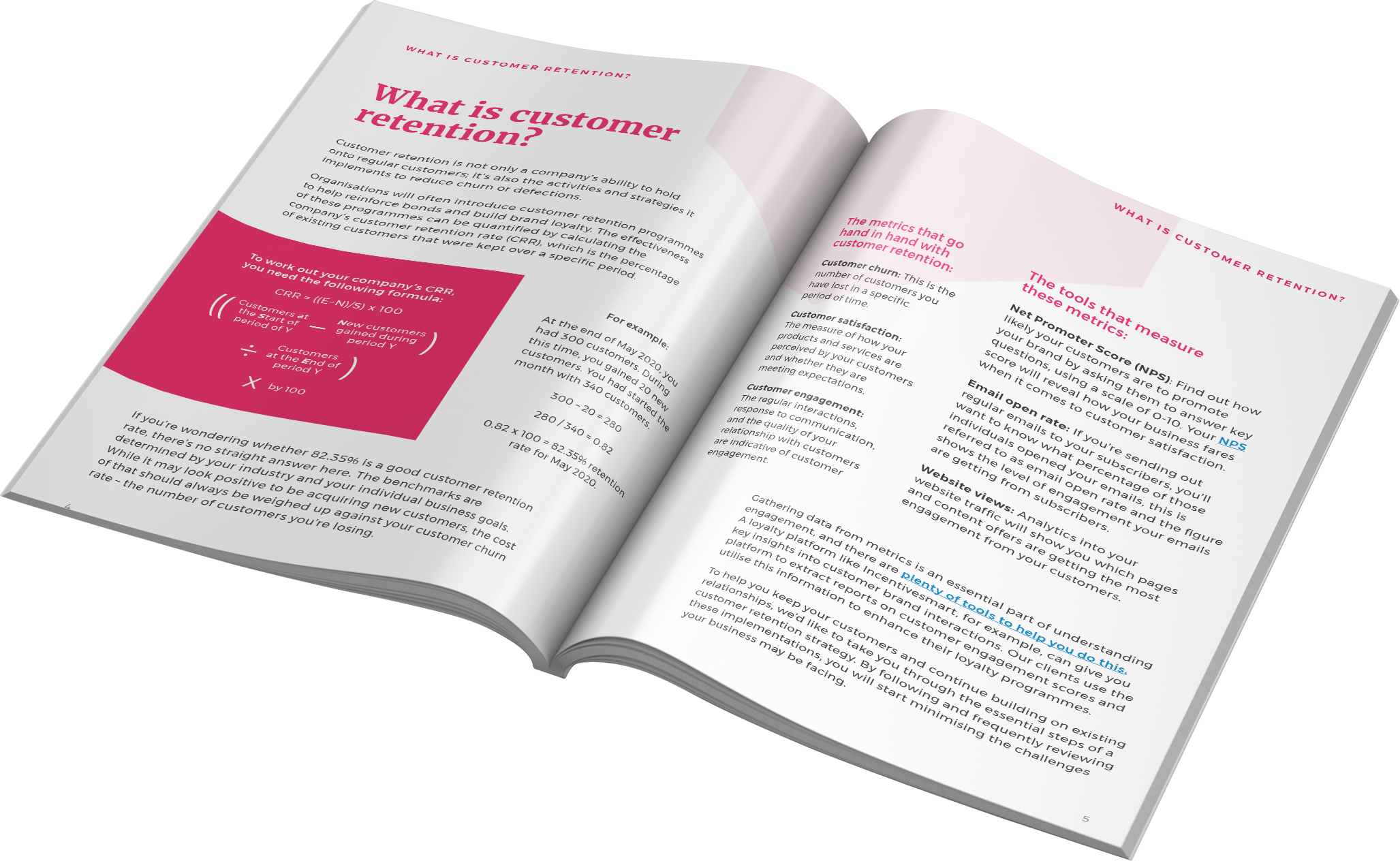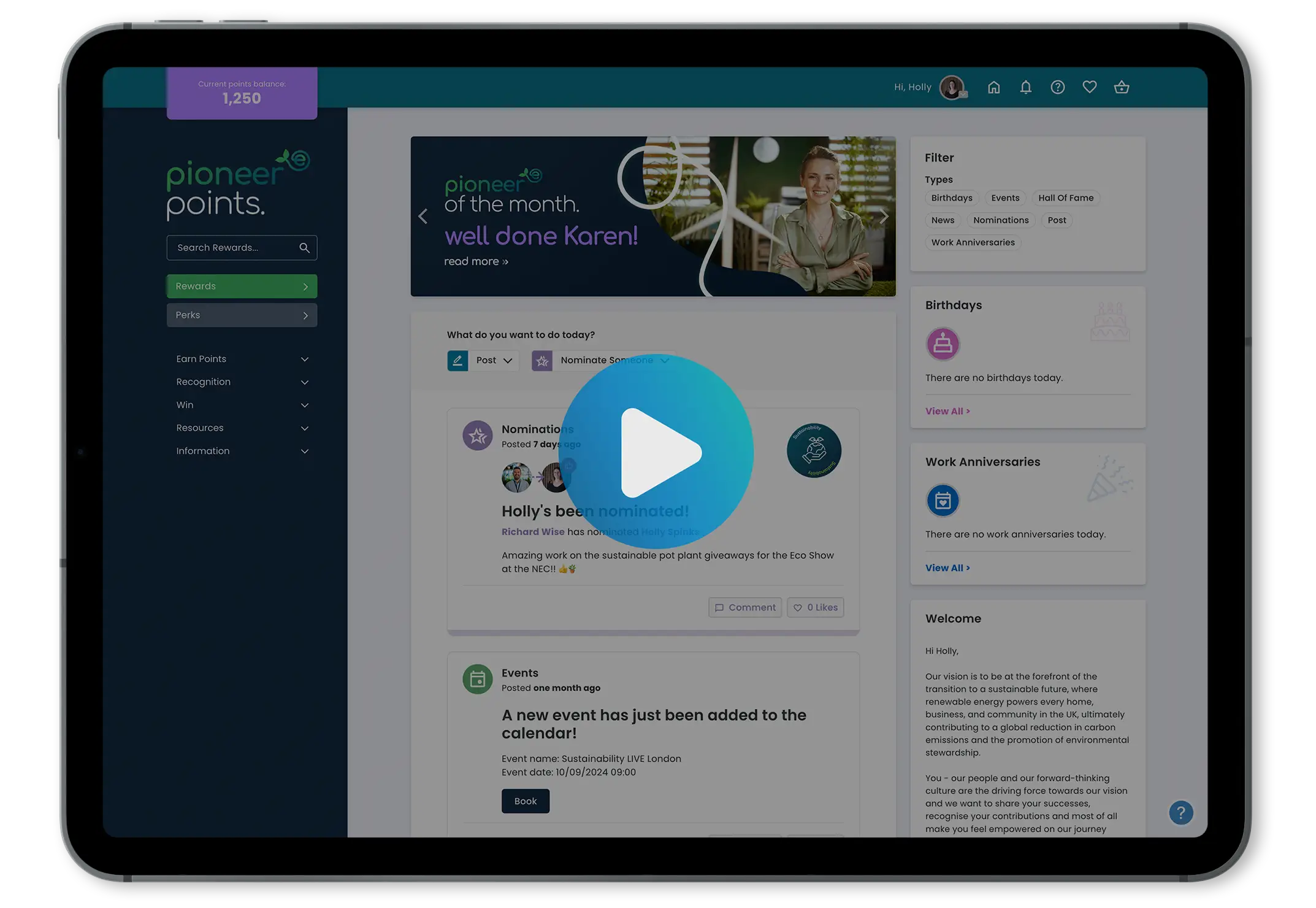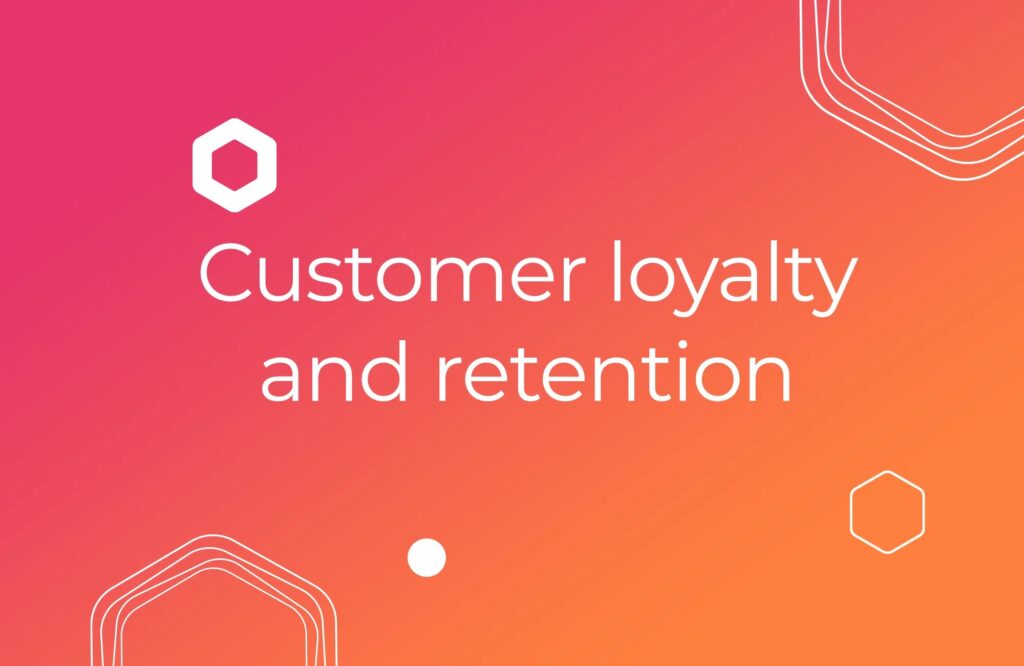


Losing a few customers is part of the course of running any business – you win some, you lose some. But you can’t afford to just sit back and watch your customers slip away. Building customer loyalty and retention is essential, as research shows that a lack of loyalty costs UK businesses a whopping £33.4 billion annually.
Now, let’s talk about loyal customers. They’re the backbone of your business; and the ones who stand by you through thick and thin. So, you’ve got to work hard to keep them on board. It’s not just about meeting their expectations; it’s about going the extra mile to ensure they’re getting the maximum value from your product or service.
And here’s a little insider tip:
Companies that deliver exceptional experiences can actually charge a premium of 16% for their products and services!
So, the good news is that there’s a silver lining to your effort.
Skip to:
What is customer loyalty and retention?
The ultimate goal of building customer loyalty and retention is to turn one-time buyers into dedicated, repeat customers who not only continue to support your business but also become advocates who recommend your brand to others.
So, how do you achieve this?
Most businesses choose to invest in retention programmes to build customer loyalty. Typically, these include a mix of strategies like loyalty rewards, personalised offers, and top-notch customer service, all aimed at making customers feel truly valued.
To see first-hand how well these programmes are working, you can use the Customer Retention Rate (CRR).
This is a metric used to measure how well a company is retaining its existing customers over a specific period.
To calculate the CRR, you can use the following formula:
Customer Retention Rate (CRR) = ((E – N) / S) x 100
- E represents the number of customers at the end of a given period (usually a month, quarter, or year).
- N represents the number of new customers acquired during the same period.
- S represents the number of customers at the start of the period.
Once you have these values, plug them into the formula to calculate the CRR.
Here’s an example:
At the end of May 2020, your customer count stood at 300. During that month, you acquired 20 new customers, and you began with 340 customers at the start of May.
To find the Customer Retention Rate (CRR) for May 2020, follow these steps:
- Subtract the number of new customers (20) from the total customer count at the end of May (300): 300 – 20 = 280
- Divide the result by the number of customers at the beginning of May (340): 280 / 340 = 0.82
- Multiply the quotient by 100 to express the retention rate as a percentage: 0.82 x 100 = 82.35%
So, the retention rate for May 2020 is 82.35%.
This means that 82.35% of your existing customers at the start of May continued to do business with you by the end of the month.
You may be wondering whether that figure is positive. Unfortunately, there’s no universal answer to that. It all depends on the nature of your business and your unique goals.

But, what about churn?
While it’s great to bring in new customers, you also need to consider how many customers you’re losing, a.k.a. your churn rate.
What tools are measured to use these metrics?
- Net promoter score (NPS): This metric helps you gauge how inclined your customers are to endorse your brand. You achieve this by posing key questions and having customers rate their likelihood of recommending your business on a scale from 0 to 10. Your NPS score offers insights into the level of customer satisfaction your business enjoys.
- Email open and click rates: If you’re regularly sending emails to your subscribers, it’s crucial to determine what percentage of those recipients actually engaged with your emails. These percentages, provide an indication of how engaged your subscribers are with your email content.
- Website views: By analysing your website traffic, you can gain valuable insights into which web pages and content offerings are generating the most engagement from your customers. This information helps you understand what aspects of your website are resonating most with your audience.
10 steps to building customer loyalty
By putting these 10 essential steps into action below, you can build lasting relationships with your customers and reduce churn, leading to a more stable and profitable customer base:

 Seek customer feedback
Seek customer feedback
Negative reviews may not be pleasant, but they do offer businesses valuable opportunities for growth and improvement. Building customer loyalty and retention is all about how you manage this feedback, and it can greatly affect your ability to retain customers and keep them coming back.
Top-tier companies excel at collecting customer feedback to refine their services and enhance their products. When you respond to dissatisfied online reviewers with sincerity and valuable information, you’re not only taking proactive steps but also demonstrating to potential customers that you’re prepared to deliver support when it truly matters.
Another way to get feedback is through surveys that focus on the areas of your business that you really want to know more about. In turn, you’ll get a clearer picture of who your ideal customers are and any pain points that need to be addressed.
Creating a reliable feedback loop is a smart approach to ensure you receive feedback on an ongoing basis.
Once you’ve got that feedback, get your marketing and sales teams together to dig into the results and spot any trends in customer behaviour or areas where you can make the user experience even better.

 Invest in sales training for your staff
Invest in sales training for your staff
A company’s sales team plays a pivotal role in the realm of customer retention. They’re not just the first point of contact between your brand and its customers; but they also play an instrumental role in nurturing these relationships on a long-term basis. So, it’s essential to equip your team with the best training and resources.
Digital platforms are a smart choice because they make it easy to share important updates about products and services. This means your frontline team is always in-the-know about the latest offerings and news.
Show your employees that learning doesn’t have to be boring. Make it worth their while by rewarding your team when they nail those online training sessions and quizzes. This not only helps them stay motivated but keeps energy and morale high on their journey to delivering top-notch results.

 Up-selling and cross-selling
Up-selling and cross-selling
Up-selling and cross-selling aren’t just savvy revenue-boosting strategies; they’re also key to enhancing the customer experience.
Up-selling
Up-selling is a sales strategy that revolves around recommending a superior or upgraded version of the product or service a customer is currently interested in. This approach aims to enhance the customer’s buying experience by offering them a higher-quality or more advanced option that better meets their needs or preferences.
The ultimate goal of up-selling is not only to increase the value of the sale but also to provide customers with added value, ensuring they leave with a product that genuinely suits their requirements and desires.
For instance, if a customer is in the market for a camera, you can recommend a more advanced lens to go with it.
According to findings from Global Sources, the average revenue increase from up-selling falls within the range of 10% to 30%. Additionally, customers who felt they received personalised recommendations were shown to be 70% more likely to stay loyal to the company and make additional purchases of products or services.
Cross-selling
Cross-selling, on the other hand, is all about suggesting supplementary products or services that complement what the customer is already interested in or has bought. The aim is to present customers with related items that can enrich their experience or fulfill any extra requirements they may have. Notably, a study by RJ Metrics via Global Sources found that cross-selling can increase the average order value by an impressive 3.5 times.
Let’s take the example of a customer shopping for a laptop. In a cross-selling scenario, the customer might also be offered items like a laptop bag, a wireless mouse, or relevant software packages.
It’s a win-win for both parties. Customers find relevant products that enhances their shopping experience, as well as boosting a business’ sales.
Here are a few helpful tips to take on board when implementing either strategy:
- Get to know your customers. Understand their needs and preferences to provide recommendations that genuinely benefit them.
- Time your suggestions during the purchase process or when the customer shows interest in related items.
- Clearly communicate the value of the additional product or upgrade, emphasising how it complements their original purchase.
- Consider creating bundled offers that combine the initial product with related items for added value.
- Use customer data to offer personalised recommendations based on their purchase history.
- Continue to engage with customers post-purchase, offering relevant suggestions and helpful content related to their buy.

 Unite your sales, marketing and customer service teams
Unite your sales, marketing and customer service teams
Consistency in branding isn’t just a ‘nice to have’; it’s a must for creating a brand that sticks in your customers’ minds. Think of it as the glue that holds trust and loyalty together.
One simple yet powerful way to achieve this is by getting your sales, marketing, and customer service teams on the same page. When these teams work hand in hand, it can lead to some impressive outcomes.
In fact, research shows that businesses that do this tend to keep customers around 36% longer. When they’re all singing from the same hymn sheet, it leads to a smoother and more satisfying journey for your customers.
In an age of information overload, where customers are bombarded with messages from all directions, having a consistent and unified brand message is a competitive advantage. It reinforces your brand’s identity and helps customers recognise and trust your business in a crowded market.
This consistency is about more than just aesthetics; it’s about creating a genuine connection with your audience. It’s about making sure your brand’s actions match its words. When you get it right, it becomes a cornerstone in building customer loyalty and retention.
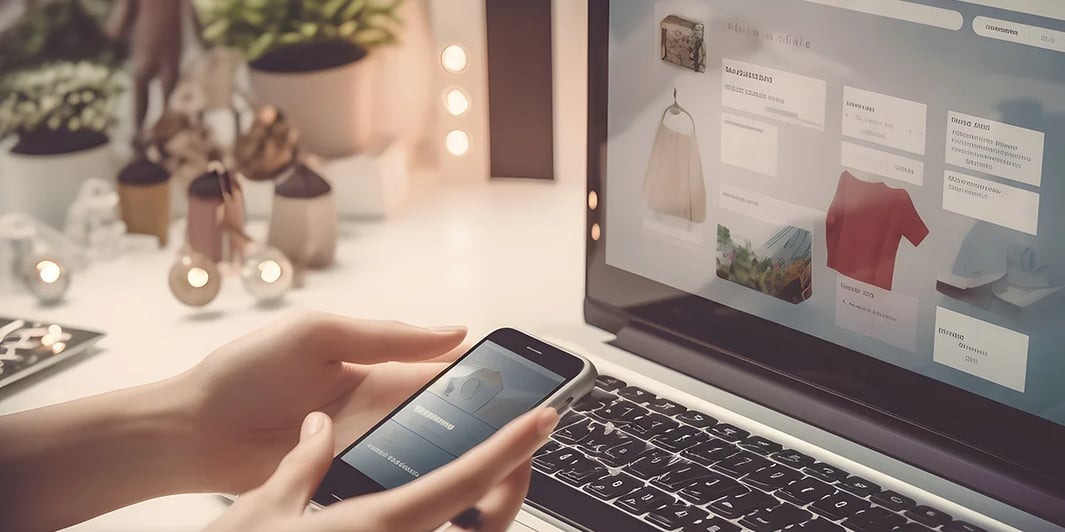
 Create a seamless omnichannel experience
Create a seamless omnichannel experience
Providing a seamless and enjoyable customer experience isn’t just a nice extra; it’s an absolute necessity for boosting customer loyalty.
The concept of the omnichannel experience is all about revolutionising how businesses engage with their customers. It breaks down the barriers that separate in-person and online interactions, seamlessly weaving them together to ensure that every customer enjoys a consistent journey.
Customers tend to interact with a brand in several ways – whether it’s by walking into a physical store, browsing a website, or using a mobile app – and it’s usually a combination of these. The key is to offer a unified and smooth experience across all these touchpoints, making their journey hassle-free and interconnected.
Here’s how to achieve this:
Channel integration
Integrating your channels involves linking all the different ways your customers interact with your business. It means that information and data should move smoothly between your physical stores, your online shop, your mobile app, your social media accounts, and your customer support. So, if a customer interacts with your brand on one of these channels, the information they share or actions they take should also be available when they switch to another channel.
For example, if they put items into their online shopping cart, those same items should still be there when they log into your mobile app.
Consistent branding
Maintaining consistent branding and messaging across all your customer interaction points is vital for creating a strong and recognisable brand identity. This means that no matter where a customer engages with your business, they should encounter the same look, feel, and message.
For example, your logo, colour schemes, and design elements should be uniform, so that customers easily recognise your brand. Also, the language and tone you use across your customer communication and marketing materials should also convey the same core values.
Unified customer data
Bring all your customer information together into a central ‘hub’. This data is then easily accessible, no matter how they get in touch with your business. It could include information such as what they’ve bought before, how they shop, and past conversations with your team.
Now, when your team talks to a customer, they have all this information right in front of them. This makes the whole experience more personal and tailored to what the customer needs and likes.

 Keep tabs on customer engagement
Keep tabs on customer engagement
Sustaining customer engagement is a continuous effort, and the key to success lies in your marketing team’s ability to regularly analyse campaign performance metrics.
They act as the driving force in this ongoing endeavour, ensuring that customer interest and involvement remain high. To achieve this, a multifaceted approach is needed both for monitoring engagement and maintaining a deep connection with your customer base, as follows:
Regular metrics analysis
Your marketing team must make it a habit to closely examine campaign performance metrics. This includes assessing key performance indicators (KPIs) such as click-through rates, conversion rates, social media interactions, and email open rates. Regular analysis allows your team to identify trends, spot areas for improvement and then adapt strategies accordingly.
Understand product life cycle
Recognise where your customers stand in the life cycle of your products or services. This means identifying whether they’re due for an upgrade, need a replacement, or could benefit from additional features. For instance, if you sell smartphones, consider targeting customers with expiring warranties for extended protection plans or introducing them to new model releases.
Timely communication
Craft communication strategies that align with crucial points in the customer journey. Send personalised emails or SMS alerts when a customer’s subscription is nearing expiration or when they’ve reached specific milestones, such as anniversaries with your service.
Communication calendar
Develop a communication calendar that outlines when and how to reach out to customers. Use it to schedule reminders, follow-ups, or promotions. For example, you might send a birthday discount or anniversary offer to express gratitude for their loyalty.
Feedback collection
Encourage customers to share their feedback and suggestions through surveys, reviews, and feedback forms. This input will provide valuable insights into their experiences and preferences, guiding future improvements.
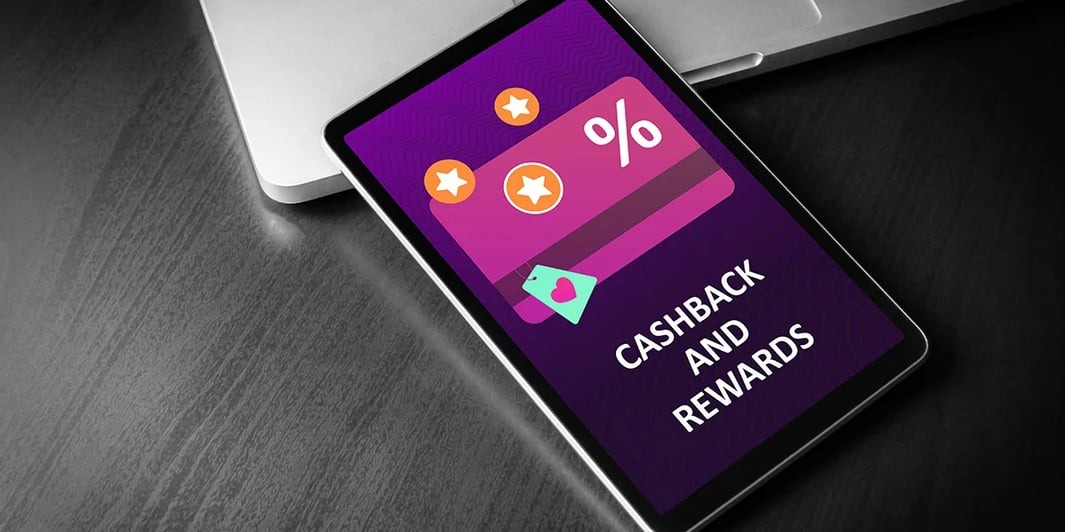
 Develop loyalty reward programmes
Develop loyalty reward programmes
A customer loyalty programme is a secret ingredient that keeps customers coming back for more. It’s a way for businesses to say, “We really appreciate you sticking with us.”
The foundation of these programmes is to give customers special rewards based on their faithfulness to the brand. For instance, each time they shop, they earn points or rewards. Over time, these points accumulate and can be turned into discounts, free goodies, or exclusive perks.
But perhaps what’s most interesting about these programmes is that customers feel like they’re actually achieving something. It’s not just about the rewards; it’s also about the feeling of progress when those points stack up. They’re always striving to reach the next reward milestone, and it keeps them coming back for more.
There are various types of loyalty programmes, that suit different businesses as follows:
- Points-based programmes: Customers earn points for each purchase, and these points can be redeemed for discounts or free products.
- Tiered programmes: Customers progress through different levels or tiers based on their loyalty. Higher tiers offer greater benefits, creating an incentive for customers to ascend the loyalty ladder.
- Cashback programmes: Customers receive a percentage of their purchase back as cash or credit for future purchases (typically popular for credit card rewards programmes).
- Punch card programmes: Customers receive a stamp or punch for each purchase, and after accumulating a certain number of stamps, they receive a free item or discount. (Typically used in small retail businesses).
- Subscription-based programmes: Customers pay a fee to access exclusive benefits, such as free shipping, early access to sales, or premium customer support. Amazon Prime is a prime example.

 Connect with customers on social media
Connect with customers on social media
Being active on social media is like having a conversation with your customers. If you’re not part of that conversation, you might come across as out of touch.
So, think about it this way: use social media to show the human side of your business. Share stories about what happens behind the scenes, how your products are made, or what your team is up to. This makes your brand more relatable and builds trust with your customers.
But remember, social media is not just about talking at people about your offerings. It’s also about listening and responding. When customers comment or ask questions, engage with them. Show that you care about what they have to say.
 Create customer advocates
Create customer advocates
People naturally gravitate towards communities where they can connect over shared interests.
Brands can tap into this by creating their own communities, offering customers a space to discuss and share thoughts in a meaningful way. This sense of belonging can be fostered through various channels, such as social media groups or dedicated website sections.
What’s interesting about maintaining an active online community is that it goes beyond simple transactions. It’s about building connections based on shared experiences and values.
Those who actively discuss their love for your brand and help others can be seen as passionate advocates who naturally spread the word about your brand within and beyond the community.
Even though it may take a while to form a large community, You’ll be amazed by how many customers transform into loyal patrons through this simple and cost-effective approach in the long-run.

 Deliver exceptional customer service
Deliver exceptional customer service
Exceptional customer service is the foundation of customer loyalty. It’s about making a commitment to go above and beyond to meet your customers’ needs and expectations. This can be broken down into several essential components that weave the fabric of exceptional customer service.
First, it means providing fast, friendly, and effective customer support. When customers reach out for help, whether it’s through phone calls, emails, or chat support, responding promptly with a warm and welcoming attitude shows that you value their time and concerns.
Exceptional customer service also involves efficient problem resolution. Every now and then, customers may encounter issues or concerns with your products or services. When these moments arise, addressing problems swiftly and effectively is a chance to demonstrate your commitment to their satisfaction.
Active listening is another vital aspect. Encouraging your support team to listen attentively to customer complaints or queries helps customers feel heard and appreciated, even when their issue can’t be resolved right away.
Regular training within your customer support team is also key. Equip them with the knowledge and authority to handle various situations effectively and provide them with the tools needed to access information and resolve issues swiftly.
Your customers are waiting for you…
In a world where businesses often seem obsessed with chasing new customers, now’s the perfect time to take a step back and consider how to retain the customers you already have.
Did you know it’s actually more cost-effective to keep existing customers rather than constantly trying to attract new ones? In fact, it can cost up to seven times more to acquire a new customer than to maintain an existing one.
By following the 10 steps above, you’re far more likely to keep your current customers happy and engaged and set the stage for long-term success and growth.
Your customers are more than just statistics on your data sheet; they’re your most valuable asset. Investing in building customer loyalty and retention is a smart move to guarantee the long-term success of your business.
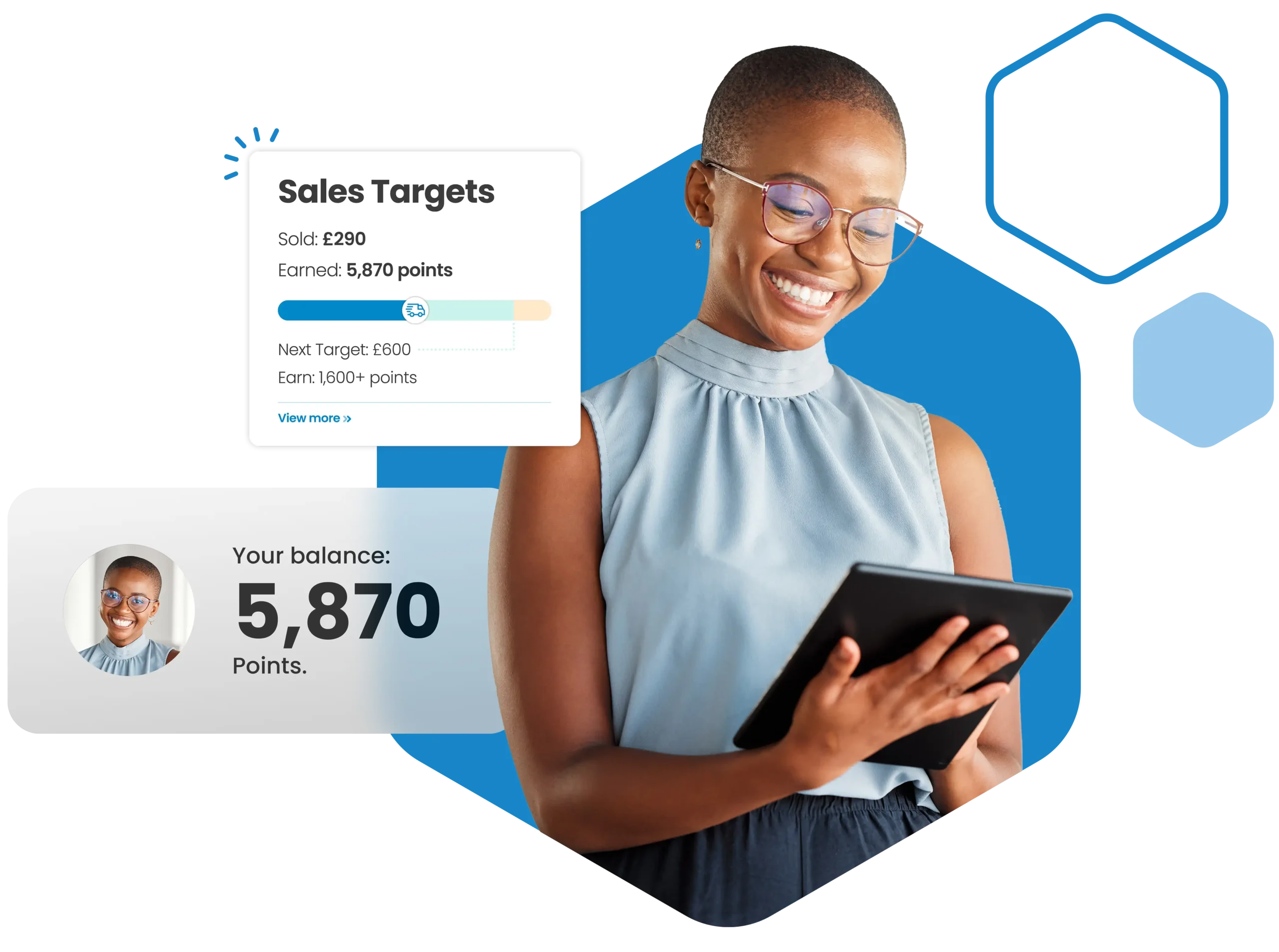


![How to keep customers coming back for more{{ include_custom_fonts({"Poppins":["Semi Bold"]}) }}](https://no-cache.hubspot.com/cta/default/5921162/interactive-188375258646.png)
